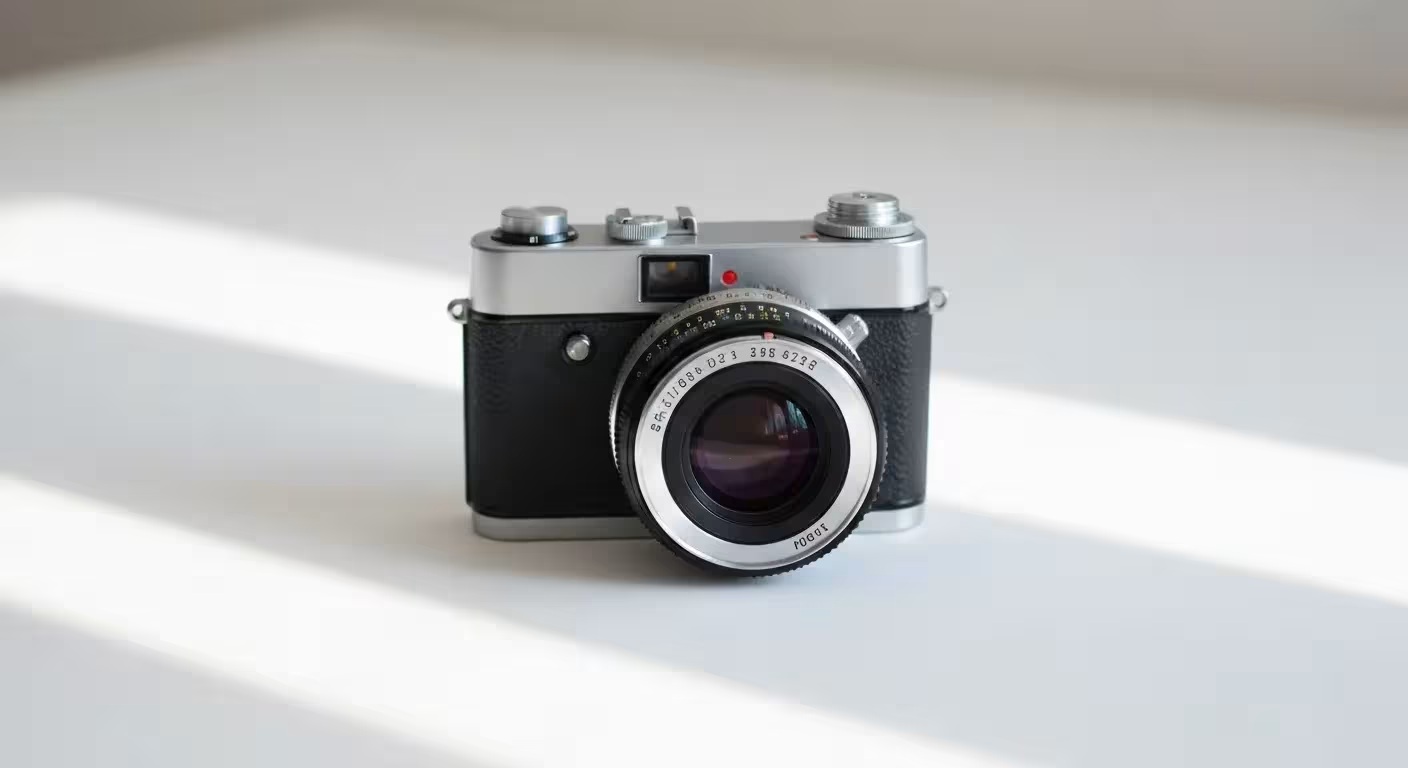
The silence in my house used to be a comfort. After my husband, John, passed away and the kids had long since built lives of their own, the quiet was a space for my own thoughts. But over the last year, that silence had started to feel… heavy. It wasn’t just an absence of sound; it was the weight of everything left behind. Every room, every closet, every drawer was a museum of a life we had built together, and I was its sole, overwhelmed curator.
My home, a lovely two-story colonial we bought in 1985, had raised a family. It had hosted holidays, birthdays, and sleepovers. And it had accumulated the evidence of all that living. Boxes of the kids’ school projects were stacked in the attic. John’s old woodworking tools gathered dust in the garage. My own collections—of vintage cookbooks, of fabric scraps for quilts I’d always meant to make—spilled from shelves and baskets.
The breaking point wasn’t dramatic. It was a Tuesday morning. I was carrying a basket of laundry up the stairs and had to sidestep a stack of magazines from 2012 that I’d set there “for a moment.” In that instant, I felt a flash of irritation so sharp it surprised me. I wasn’t just living in my home; I was navigating an obstacle course of my own creation. The house didn’t feel like a sanctuary anymore. It felt like a storage unit I was paying a mortgage on.
Around the same time, another quiet anxiety was growing: money. My retirement income was what the experts would call “adequate.” It covered the bills, the property taxes, the groceries. But there was no room for error. A new roof, a major car repair—those were things that kept me up at night. The idea of traveling to see my grandkids in California more than once a year felt like a luxury I couldn’t justify. There was a constant, low-level hum of financial caution in the back of my mind. It was the feeling of being on a financial tightrope, and I desperately wanted a safety net.
The Decision to Reclaim My Space
I decided, with the conviction that only comes from true frustration, that something had to change. My initial goal had nothing to do with money. It was about breathing room. I wanted to walk through my house without feeling the press of forgotten projects and dusty memories. I wanted to reclaim my space, and in doing so, maybe reclaim a piece of my own peace of mind.
I didn’t know where to start. The sheer volume of stuff was paralyzing. So I made a rule: one small, manageable area at a time. I chose the guest bedroom closet. It was the perfect target—out of sight, out of mind, and filled with things I hadn’t touched in years.
Pulling everything out onto the floor was a shock. I found my old tennis rackets, a collection of hotel soaps, and at least four different sets of winter hats and gloves. Tucked in the back, in a dusty cardboard box, was John’s old camera collection. He had loved photography. There were two 35mm film cameras, a handful of lenses, light meters, and flash units. Seeing them brought a pang to my heart. I could picture him perfectly, a camera always around his neck on our family vacations.
My first instinct was to put them right back in the box. They were his. They were memories. But then I looked at them again. They weren’t being used. They were just sitting in the dark, gathering dust. The memories weren’t in the cameras themselves; they were in my heart and in the thousands of photos we had in albums. What good were these beautiful instruments doing in a closet?
A thought, tentative at first, popped into my head. I wonder if these are worth anything?
My First Foray into the World of Selling
I had no idea how to find out. I felt a little silly, but I sat down at my computer and typed, “old film cameras value” into Google. It was a digital rabbit hole. I found photography forums, collector sites, and articles about the resurgence of film photography among younger generations. This led me to eBay.
I’d bought things on eBay before, but I’d never sold anything. The idea was intimidating. But I spent an afternoon looking up the specific models of John’s cameras. I learned to check the “Sold Listings” box to see what people were actually paying for them, not just what sellers were asking. I was stunned. One of the lenses alone had recently sold for over $150. The entire collection could be worth several hundred dollars.
Suddenly, this wasn’t just about getting rid of clutter. This was an opportunity. That little financial anxiety in the back of my mind piped up. This could be the start of my safety net. This could be a side hustle.
Taking the plunge was nerve-wracking. I chose one of the lenses to be my test case. I spent an hour trying to take good pictures of it on my dining room table, moving lamps around to get the lighting just right. I wrote a description, trying to be as honest as possible. “I don’t know much about this,” I wrote, “but it was my husband’s and he took great care of his things. It looks to be in excellent condition.”
I set a starting bid of $29.99 and held my breath as I clicked the “List Your Item” button. For the next few days, I checked my phone constantly. A few people “watched” the item. Then, a bid came in. Then another. By the end of the seven-day auction, that single lens sold for $175.
I will never forget the feeling of seeing that final number. It was a potent mix of shock, validation, and pure, unadulterated pride. I did that. I took a forgotten item from a dusty closet, learned a new skill, and turned it into real money. It felt like magic. That one sale lit a fire in me. My cluttered house didn’t look like a burden anymore. It looked like a treasure chest waiting to be opened.
Creating a System from the Chaos
That first sale was exhilarating, but I quickly realized that if I wanted this to be a consistent side hustle, I needed a process. I couldn’t just randomly pick things and hope for the best. The next few months were a masterclass in trial and error, but slowly, I developed a system that worked for me.
Step 1: The Great Sort
I tackled the house room by room. For each room, I created four distinct zones using laundry baskets and empty boxes:
- Keep: This was for things I truly loved and used, or items with such profound sentimental value that no amount of money could replace them (like the kids’ hand-drawn Father’s Day cards). This pile was, by design, the smallest.
- Donate: This was for good, usable items that likely had little resale value. Old towels, everyday dishes, clothes that were perfectly fine but not designer. It felt good to know these things would go to someone who needed them.
- Trash/Recycle: This was for the genuinely broken, expired, or useless items. It was liberating to finally throw away old, dried-up pens and manuals for appliances I no longer owned.
- Sell: This was the exciting pile. This was anything I suspected might have value. It became my “inventory.”
This sorting process was an emotional workout. I held my wedding china, which we’d used maybe five times in 40 years. It was beautiful, but it was taking up an entire cabinet. I thought about my daughter, who lives a minimalist life in a small apartment. She would never want it. With a deep breath, I decided to sell it, piece by piece. The memories weren’t in the plates; they were in the marriage.
Step 2: The Research Deep Dive
My “sell” pile became my homework. I set up a “listing station” on a card table in the spare room. Every evening, I’d spend an hour or two researching items. My laptop became my most valuable tool. I got very good at describing items for Google. Instead of “old glass dish,” I learned to look for markings on the bottom and search “Pyrex 404 Golden Acorn Cinderella Bowl.”
Google Lens, an app on my phone, became my secret weapon. I could take a picture of a strange object, and it would often identify it for me. This is how I discovered that a set of colorful metal tumblers from the 1960s were a highly collectible brand and worth over $50.
I made mistakes, of course. I once spent an entire week carefully photographing and listing what I thought was a valuable antique book. It got zero bids. I later discovered it was a common reprint worth about five dollars. It was a humbling lesson: my perception of value didn’t always align with the market’s. But every mistake was a lesson that made me a smarter seller.
Step 3: Mastering the Art of the Listing
I learned that selling online is all about building trust. Since the buyer can’t hold the item in their hands, your photos and description have to do all the work.
- Photography: I didn’t buy a fancy camera. I just used my smartphone. My trick was to use natural light. I’d take photos in the morning near a big window. I also created a simple backdrop using a piece of white poster board. I took pictures from every angle and made sure to get close-ups of any logos, tags, or… flaws.
- Honesty in Descriptions: This was my golden rule. If a plate had a tiny chip, I took a picture of the chip and wrote, “Please note the small chip on the rim, as shown in the photo.” Hiding flaws was a recipe for bad feedback and returns. Being upfront built my reputation as an honest seller. Buyers appreciated it, and I believe it led to better sales in the long run.
- Smart Pricing: I almost always used the 7-day auction format starting at a low price, like $9.99. This encouraged bidding and often resulted in a final price higher than what I might have listed it for as a “Buy It Now.” It was more exciting, too!
Step 4: Conquering the Shipping Monster
I will be honest: shipping terrified me at first. How do I pack a fragile glass bowl so it doesn’t break? What does it cost? Where do I even get boxes?
I became a scavenger. I saved every box and piece of bubble wrap from my own online orders. I asked neighbors for their Amazon boxes. For postage, I bought a cheap digital scale for $20 online. This was a game-changer. I could weigh the package at home, print the shipping label directly from eBay (at a slight discount), and just drop it off at the post office without waiting in line.
My biggest shipping lesson came from selling a large, framed painting. I slapped some cardboard on it and sent it off. It arrived with a cracked frame. I had to issue a full refund, and I was out the shipping costs. It was a painful but necessary lesson. After that, I watched YouTube videos on how to pack fragile items. I learned to use bubble wrap, sturdy boxes, and lots of packing tape. I never made that mistake again.
The Unexpected Rewards of My Side Hustle
Over the first year, this little project transformed. It was no longer just about decluttering. It was a legitimate, income-generating side hustle that was changing my life in ways I never anticipated.
The Financial Freedom
The money started as a trickle. Fifty dollars one month, a hundred the next. But as I cleared out more of the house and got better at selling, the numbers grew. I started consistently bringing in an extra $400 to $500 a month. To some, that might not sound like a fortune, but for me, it was everything. It was the safety net I had craved.
It meant I could get my car’s timing belt replaced without dipping into my core savings. It meant I could say “yes” when my son called and asked if I wanted to fly out for my granddaughter’s birthday, without a week of financial anxiety. I started a separate savings account I nicknamed my “Fun and Freedom Fund.” Watching that balance grow gave me a sense of security and independence I hadn’t felt in years.
The Gift of a Clear Mind and a Clear Home
The physical change in my house was astounding. The guest room is now an actual guest room, with a neatly made bed and empty closet. The garage has space to park my car. I can open a drawer and find exactly what I’m looking for. The house feels lighter, brighter, and more manageable.
The mental benefits were even more profound. Living in a clean, organized space reduced my daily stress levels in a way I can hardly describe. There was a quiet hum of anxiety I didn’t even know I had until it was gone. I no longer felt like I was drowning in the past; I was living in a present I had intentionally created.
A Newfound Sense of Purpose and Confidence
Perhaps the most surprising reward was the effect this side hustle had on me, personally. In the years after John died, I felt a bit… adrift. My role as a wife was gone, my role as an active mother had long since changed. This project gave me a new purpose. It was a challenge. It required me to learn, to adapt, and to problem-solve.
I, a woman in my late 60s, learned about digital photography, online marketing, shipping logistics, and customer service. I became an “expert” in weirdly specific things, like identifying vintage patterns and dating old board games. When my kids would visit, I’d proudly show them my shipping station and tell them about my latest interesting sale. I felt capable, resourceful, and engaged with the modern world.
My Reflections and What I Learned on This Journey
Looking back, this journey that started with a cluttered staircase has been one of the most rewarding experiences of my retirement. It wasn’t just about the money, though the money has been a wonderful blessing. It was about transformation.
I learned that value is often hidden in plain sight. We all have things tucked away in closets and basements that could be a small windfall for us and a treasure for someone else. You don’t need a warehouse of antiques; you just need to start with what you have.
I learned that you are never too old to learn a new skill. The thought of learning eBay and shipping was daunting, but I took it one small step at a time. The internet is full of free resources and tutorials if you’re willing to look. That feeling of mastering something new is an incredible confidence booster at any age.
Most importantly, I learned that taking control of your environment is a powerful way to take control of your life. The act of physically clearing out the old and unnecessary created mental and emotional space for the new. It allowed me to honor my past and the life I built with John without being buried by it. I could keep the most precious memories and let the rest go, creating a new chapter for myself.
Today, my house is still a home full of memories. But now, they are the ones I’ve chosen to keep. The silence is no longer heavy; it’s peaceful. And when I sit down at my computer to list a new item, it’s not a chore. It’s a quiet, satisfying hum of a side hustle that gave me back my space, padded my bank account, and reminded me just how capable I am.















